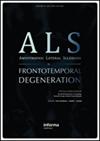平台通讯:摘要书-第33届ALS/MND国际研讨会(完整的可打印文件)
IF 2.8
4区 医学
Q2 CLINICAL NEUROLOGY
Amyotrophic Lateral Sclerosis and Frontotemporal Degeneration
Pub Date : 2022-11-01
DOI:10.1080/21678421.2022.2082738
引用次数: 9
摘要
神经炎症在促进ALS的疾病进展中发挥着重要作用,部分是由受损的运动神经元与周围神经胶质细胞以及失调的中枢和外周免疫调节细胞的相互作用介导的。在这种免疫调节细胞中突出的是CD4+CD25高FOXP3+T淋巴细胞,其通过抑制促炎反应介导神经保护。然而,ALS的Treg抑制功能受损,但在体外扩增后恢复甚至增强。自体输注这些扩大的T细胞再加上皮下注射白细胞介素2,形成了两项ALS临床试验的基础。在一项针对3名ALS患者的1期试点研究中,输注是安全的,耐受性良好,并减缓了疾病早期和后期的进展率。Treg数量和抑制功能在每次输注后增加,并与疾病进展的减缓相关。然而,临床益处的持续时间是有限的,可能与氧化应激、4-羟基壬烯醛和氧化低密度脂蛋白的血清生物标志物有关。这些脂质过氧化物生物标志物在Treg输注前增加,随着Treg的输注和疾病进展的减缓而下降,在没有输注Treg的情况下随着疾病进展的加速而再次上升,然后当Tregs再次使用时再次下降。因此,4-HNE和ox-LDL的水平对Treg输注有效,反映了受试者临床状态的稳定或恶化。休斯顿卫理公会和马萨诸塞州总医院进行了一项关于自体输注扩张Tregs联合皮下注射IL-2的2A期研究。该研究计划对12名ALS患者进行为期24周的随机对照试验(RCT),随后进行为期24周开放标签扩展试验(OLE)。在随机对照试验中,Treg/IL-2治疗是安全且耐受性良好的;活性组Treg抑制功能增强。新冠肺炎疫情减少了参与者人数,因此无法评估随机对照试验的相对进展率。然而,8名ALS患者完成了24周的OLE;Treg/IL-2治疗安全且耐受性良好,Treg抑制功能和数量增加。6名患者OLE进展缓慢或无进展(ALSFRS-R平均变化-2.7分)2名患者进展迅速;它们对Treg输注没有反应,并且具有升高的外周炎症标志物(IL-17C和IL-17F)以及升高的氧化应激标志物(OLR1和氧化LDL)。进展缓慢组的6名参与者的水平正常。Treg/IL-2治疗是否能减缓ALS的疾病进展需要一项大型双盲随机对照研究。尽管如此,我们的开放标签研究(尽管在有限的人群中)表明,Treg疗法是安全且耐受性良好的,是减缓ALS进展的一种有前景的方法;脂质过氧化物生物标志物不仅可以反映促炎环境的增强,而且可以用于监测临床对治疗的反应。本文章由计算机程序翻译,如有差异,请以英文原文为准。
Platform Communications: Abstract Book – 33rd International Symposium on ALS/MND (Complete printable file)
Neuroinflammation plays a prominent role in promoting the disease progression of ALS, mediated in part by the interaction of injured motoneurons with surrounding glia and dysregulated central and peripheral immunomodulatory cells. Prominent among such immunomodulatory cells are the CD4+ CD25highFOXP3+ T-lymphocytes that mediate neuroprotection by suppressing proinflammatory responses. However, Treg suppressive functions are impaired in ALS, but are restored and even enhanced following expansion ex vivo. Autologous infusions of these expanded T regs together with subcutaneous IL- 2 injections formed the basis of two ALS clinical trials. In a Phase 1 pilot study of 3 ALS patients, infusions were safe and well-tolerated and slowed progression rates during early and later stages of the disease. Treg numbers and suppressive function increased after each infusion and correlated with slowing of disease progression. However, the duration of the clinical benefit was limited, possibly related to the serum biomarkers of oxidative stress, 4-hydroxynonenal, and oxidized LDL These lipid peroxide biomarkers were increased prior to Treg infusions, fell with Treg infusions and slowing of disease progression, rose again as disease progression accelerated in the absence of infused Tregs, then fell again when Tregs were reinfused. Thus, the levels of 4-HNE and ox- LDL were effectively responsive to Treg infusions and mirrored the stabilization or deterioration of the subject's clinical status. A Phase 2A study of autologous infusion of expanded Tregs in combination with subcutaneous IL-2 injections was undertaken at Houston Methodist and Massachusetts General Hospitals. The study was planned for 12 ALS pts enrolled in a 24-week randomized control trial (RCT) followed by a 24- week open label extension (OLE). In the RCT Treg/IL-2 treatments were safe and well-tolerated;with increased Treg suppressive function in the active group. Evaluation of relative progression rates in the RCT was precluded by the COVID pandemic which decreased the number of participants. However, 8 ALS patients did complete the 24-week OLE;Treg/IL-2 treatments were safe and well-tolerated, and Treg suppressive function and numbers were increased. Six patients showed slow to no progression in the OLE (mean change of -2.7 points on ALSFRS-R) Two patients progressed rapidly;they were unresponsive to Treg infusions and had elevated markers of peripheral inflammation (IL-17C and IL-17F) as well as elevated markers of oxidative stress (OLR1 and oxidized-LDL). The 6 participants in the slow progressing group had normal levels. Whether Treg/IL-2 treatments can slow disease progression in ALS requires a large double-blind randomized controlled study. Nevertheless, our open-label studies, albeit in a limited population, suggest that Treg therapy is safe and well tolerated, and a promising approach to slowing ALS progression;lipid peroxide biomarkers may not only reflect a heightened pro-inflammatory milieu but may also be useful in monitoring clinical responsiveness to therapy.
求助全文
通过发布文献求助,成功后即可免费获取论文全文。
去求助
来源期刊

Amyotrophic Lateral Sclerosis and Frontotemporal Degeneration
CLINICAL NEUROLOGY-
CiteScore
5.40
自引率
10.70%
发文量
64
期刊介绍:
Amyotrophic Lateral Sclerosis and Frontotemporal Degeneration is an exciting new initiative. It represents a timely expansion of the journal Amyotrophic Lateral Sclerosis in response to the clinical, imaging pathological and genetic overlap between ALS and frontotemporal dementia. The expanded journal provides outstanding coverage of research in a wide range of issues related to motor neuron diseases, especially ALS (Lou Gehrig’s disease) and cognitive decline associated with frontotemporal degeneration. The journal also covers related disorders of the neuroaxis when relevant to these core conditions.
 求助内容:
求助内容: 应助结果提醒方式:
应助结果提醒方式:


